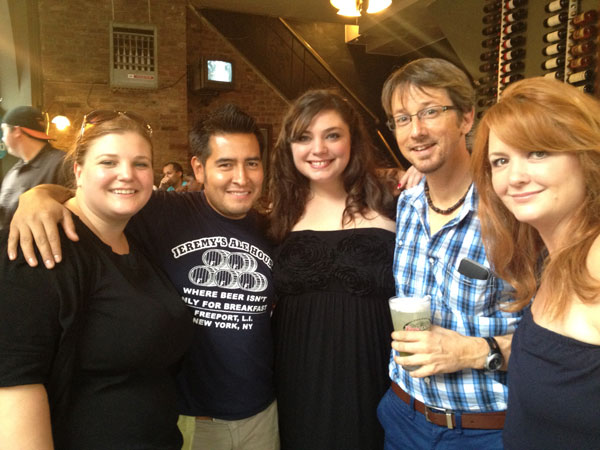
BY SAM SPOKONY | The New York City Department of Parks and Recreation got an unexpected history lesson this year while completing construction on a new park in the Civic Center.
While digging up part of the park last fall, Parks Department workers stumbled upon a strange series of stone walls buried beneath the site. “They immediately stopped working in the area and called me,” according to Amanda Sutphin, director of archaeology at the city’s Landmarks Preservation Commission (L.P.C.). “It was definitely the right thing to do.”
Collect Pond Park, on Leonard Street between Centre and Lafayette Streets, is scheduled to open in late September, according to the Parks Department. The one-acre space will boast an open plaza with benches and tables, decorative pavements and a water spray fountain.
The design will also feature a small, shallow pool to commemorate the site of Collect Pond, a popular 18th-century attraction that was approximately 60 feet deep. In the early 19th century, when the park became polluted, the city filled it in.
The approximately $5 million project, which has been five years in the making, is being financed by the Lower Manhattan Development Corporation (L.M.D.C.).
At Sutphin’s request, the Parks Department hired an independent archaeologist to investigate the underground stone more thoroughly. The discovery was surprising: The foundation of a former section of The Tombs, a famous city prison, had been sitting intact underneath the ground for over a century.
Out of three walls found beneath the park, two are “undoubtedly the remnants of the foundation and perimeter wall of the second Tombs building constructed in 1902,” states a historical report completed in January by A.K.R.F., an environmental consulting firm hired to analyze the discovery.
In other words, The Tombs — originally named the New York City Halls of Justice and House of Detention — had four incarnations, the first of which was built soon after Collect Pond was filled, the A.K.R.F. report explained.
The prison was initially constructed in 1838 as a response to rising crime rates in the city, following the filling of the pond between 1810 and sometime in the 1820s. But it didn’t take very long for the structure to begin sinking into the soft, swampy ground, creating awful living conditions for its 300 prisoners.
An 1846 New York Herald article quoted in the A.K.R.F. report described the perpetual dreariness brought on by the oft-overflowing cells.
“[The prisoners are] here entombed to fester and offend,” the article stated, “until the moral atmosphere of the entire vicinage is impregnated with their odious exhalations, and the very soil seems to send forth in foul luxuriance the noxious shoots of crime and hardy guilt.”
In 1902, after decades of planning, the prison was demolished and replaced. The second Tombs was built on a deeper foundation and at a higher grade than the first one in order to avoid structural instability and sinking, according to the report.
Although another replacement Tombs was built on the nearby White Street 40 years later — now called the Manhattan Detention Complex — the 1902 building’s foundation turned out to be deep and stable enough to survive underground.
For preservation experts, the next step after identifying the prison walls was to decide how to protect them during the development of Collect Pond Park. While the job seems to have been a balancing act, it apparently went smoothly.
“We identified a new route for the park’s underground utility lines so that they wouldn’t impact the foundation,” explained Dan Keefe, a spokesperson for the New York State Office of Parks, Recreation and Historic Preservation, which advised on the project alongside A.K.R.F. and the L.P.C. “The lines were changed to our satisfaction, and there haven’t had to be any consultations since then.”
Per approval of the L.M.D.C. and state officials, the layout of the park’s storm drainage system was changed to minimize below-grade interferences with the prison walls, according to George Bloomer, a design supervisor for the Parks Department.
But the resting place of the second Tombs is going to remain hidden to many New Yorkers who will relax amid the greenery of Collect Pond Park come September. Since plans for the park had already been in place for years, the design will not include the stones of the prison, and it will not make mention of any of their paths through history; only the former Collect Pond will be highlighted and remembered for years to come.
“They will remain buried,” Bloomer said of the foundation walls.
Sutphin said that, although the work to preserve the prison remnants is complete, the L.P.C. will remain involved in monitoring that portion of the site. In addition to its written report, A.K.R.F. compiled detailed maps and drawings of the buried foundation that will give preservation experts a better sense of how to handle future foundation issues, she said.
“But I think it would’ve been such a great idea to incorporate the foundation in the design of the park,” Sutphin added wistfully, “so that people could at least have seen where the building once stood.”
































